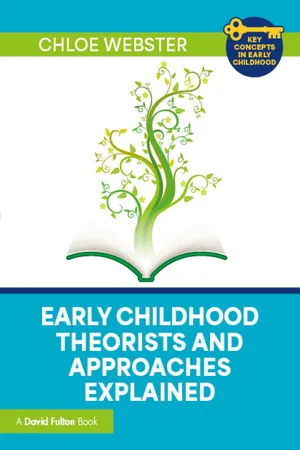
- 136 pages
- English
- ePUB (mobile friendly)
- Available on iOS & Android
Early Childhood Theorists and Approaches Explained
About this book
This new book provides accessible explanations of the key theories, concepts, and approaches that form the foundations of early childhood education. Unpicking terms like "attachment," "constructivism," and "heuristic play" and introducing both established and less-known contemporary theorists, it is designed to be an easy and comprehensive guide to early childhood theories and approaches, an often complex topic to understand and explore fully.
The book is divided into two parts. The first provides a brief overview of the theorists and approaches, both historical and modern, with explanations, backgrounds, benefits, and criticisms where appropriate. It also defines key terms used in theory and research alongside examples of how they work in practice. Part 2 looks more broadly at how these theories and approaches have been incorporated into settings and present-day policies. The chapters also offer insights from practitioners on how the theories are used successfully and how different countries and cultures adopt and implement particular approaches.
This latest book in the Key Concepts in Early Childhood Series is essential reading for early years practitioners and students who want to support their studies and deepen their understanding, as it makes the pedagogical theories behind the early years curriculum and framework easy to understand and apply.
Frequently asked questions
- Essential is ideal for learners and professionals who enjoy exploring a wide range of subjects. Access the Essential Library with 800,000+ trusted titles and best-sellers across business, personal growth, and the humanities. Includes unlimited reading time and Standard Read Aloud voice.
- Complete: Perfect for advanced learners and researchers needing full, unrestricted access. Unlock 1.4M+ books across hundreds of subjects, including academic and specialized titles. The Complete Plan also includes advanced features like Premium Read Aloud and Research Assistant.
Please note we cannot support devices running on iOS 13 and Android 7 or earlier. Learn more about using the app.
Information
Table of contents
- Cover
- Half Title
- Series
- Title
- Copyright
- Contents
- Acknowledgements
- A note from the editor
- Introduction
- Part 1 Explaining terms
- Part 2 Applying these theories to practice
- Index